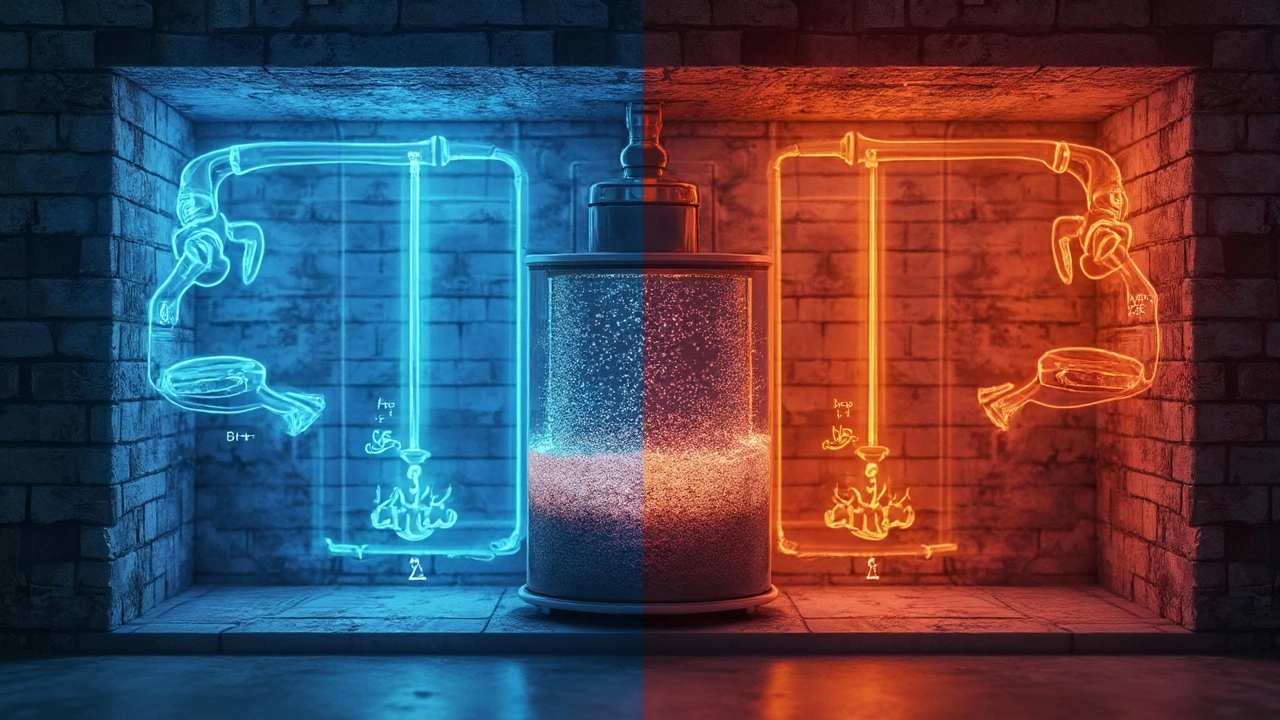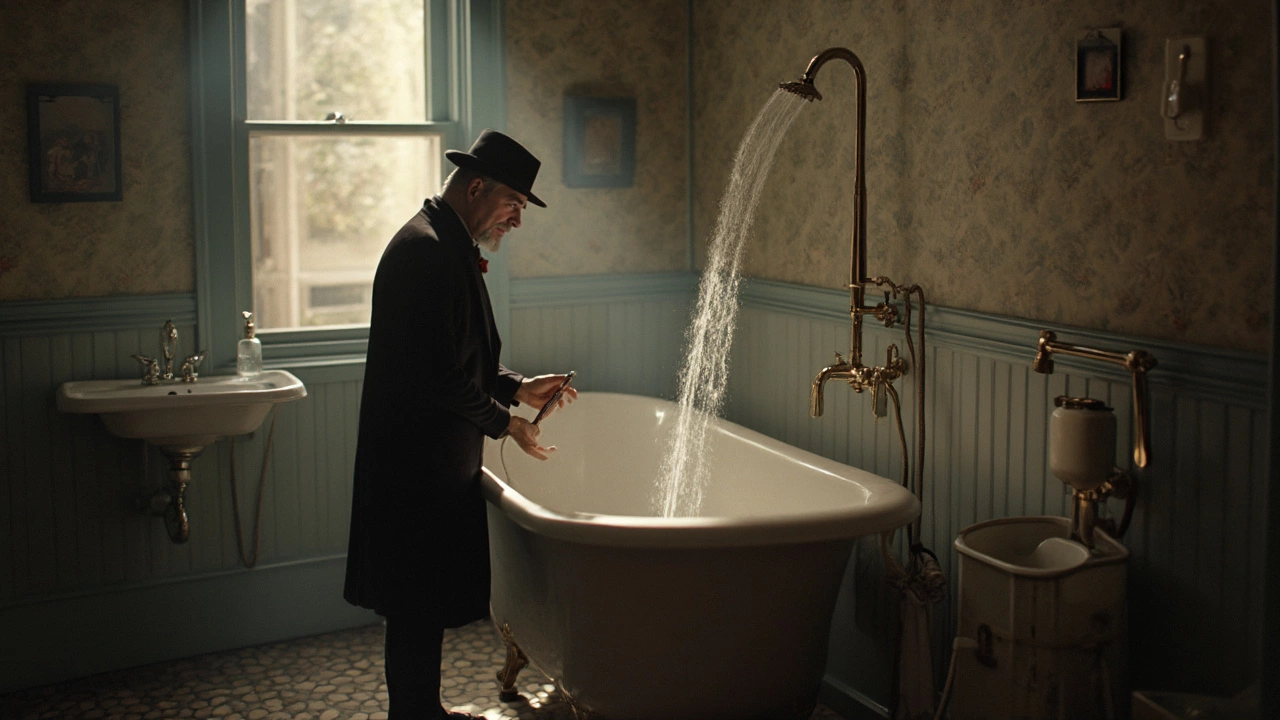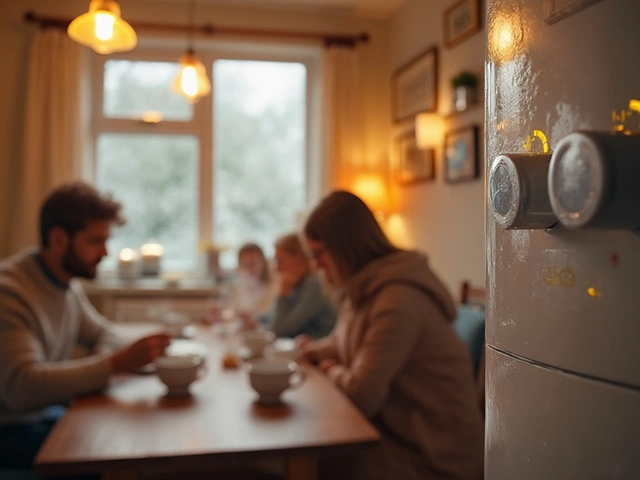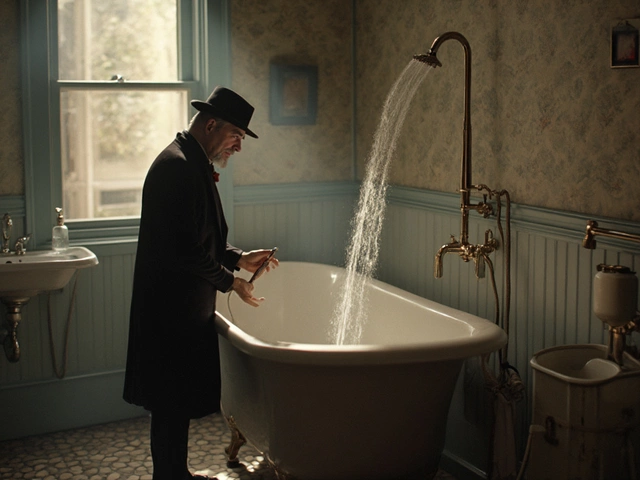Ever notice how the shower greets you with a blast of cold when you're expecting warm relief, but the bathroom sink runs hot just fine? You're not alone. It's enough to make anyone's morning start with a not-so-refreshing shock!
The mystery often boils down to a handful of usual suspects. One culprit might be how the pipes are organized in your home. Sometimes, the shower and sink might be on separate lines, and if one gets clogged or pressured differently, it can result in uneven water temperatures.
Another potential issue could be with the shower valve. If it's not mixing hot and cold water correctly, it could be serving you a cold surprise instead. And let's not forget about the water heater itself. If it's not set correctly or if there's sediment build-up, it might not be able to handle the demand for hot water.
Want to solve it yourself before calling in the pros? A great place to start is checking if the water heater's temperature setting is what's causing the lack of hot water. Also, giving the heater a flush can sometimes clear up sediment that's messing with its efficiency.
Understanding the Basics
If your shower cold, it doesn't take Sherlock Holmes to figure out that something needs fixing, but a basic understanding helps. First off, let's talk about how water heats up in your house. Most homes use a water heater to provide hot water for showers, sinks, and other appliances. The heater warms up the water and pumps it through pipes whenever you need it. Easy, right?
But not all outlets may receive the same water temperature. This difference is often due to the separate piping systems that direct water to various fixtures like your shower and sink. That means a hiccup along the pipes or connections can result in inconsistent water temperatures.
Primary Causes of Temperature Changes
There are a few primary causes that can lead to your shower being cold while the sink stays nice and hot:
- Pipe Routes: The hot water may travel a longer, more complex path to reach your shower compared to your sink. Longer paths mean heat loss, especially if the pipes aren’t insulated well.
- Shower Valves: If your shower valve's not doing its job right, it might not be mixing cold and hot water perfectly to give you that comforting warm shower.
- Water Heater Capacity: The heater might be doing its best but if it's not sized right for your household's demand, it can run out quicker than expected. When everyone’s showering and washing up at once, the hot water runs low.
Understanding Your Water Heater
Your water heater's the muscle behind your hot water. Common heaters include tank and tankless varieties:
| Type | Description | Pros |
|---|---|---|
| Tank Heaters | Store hot water in a tank, ready for use. | Good for consistent supply during high demand. |
| Tankless Heaters | Heat water on-demand, directly as it flows. | Energy efficient; endless hot water. |
Understanding these basics makes it so much easier to tackle the next step: pinpointing the exact issue that's stealing your hot shower bliss!
Common Culprits
Alright, let's get into the nitty-gritty of why your shower might not be dishing out hot water while the sink really knows how to turn up the heat. First off, the plumbing paths are a common issue. If the shower and sink are on separate pipe routes, different water pressures can mean different water temperatures.
Now, let's talk about the shower valve. That little device is supposed to balance hot and cold water for a cozy shower. If it’s worn out or broken, it might be leaving you high and (literally) dry on the hot side. According to James Sullivan, a renowned plumbing expert,
"Faulty shower valves are one of the most frequent causes of inconsistent temperatures in showers. They wear out faster than you’d think."
Another suspect in the lineup is, of course, the water heater. If it’s set too low on the temperature gauge, it’s probably never going to meet the demand during your shower time. Not to mention, if there's sediment build-up like mineral deposits, it can limit your heater’s ability to produce that comforting hot water.
Look Out for Sediments
Speaking of sediment build-up, this is a sneaky culprit that often goes unnoticed. Over time, minerals from hard water can accumulate, making the heater work harder and less effectively. An easy way to check for sediment is by simply turning on the hot water at the sink. If it's hot but the shower doesn't follow suit, sediment might be in play.
Pressure Balancing
Your house may have what’s called a pressure-balancing valve. If that's out of whack, it can shift the balance and give you either too much cold or too much hot. If you've got a new washing machine or dishwasher pulling water at the same time, these systems can affect overall pressure too.
Sometimes, folks might notice a decreased hot water capacity, and a sneaky reason for this could be a worn-out dip tube in the water heater. The dip tube sends cold water to the bottom of the tank for heating. When it breaks, cold water may linger at the top and get sent directly to your fixtures.
In any case, figuring out the problem involves a bit of detective work. Keep these potential culprits in mind next time you’re surprised by a cold shower, and you might just solve your mystery!

DIY Troubleshooting Tips
Ready to roll up your sleeves and tackle that pesky hot water issue in your shower? Let's walk through some straightforward steps to see if we can get that water flowing hot.
1. Check the Water Heater Settings
First things first, make sure your water heater is set to the right temperature. A good range is usually between 120°F and 140°F. If it's set lower, that could explain why your shower isn't heating up while the sink seems fine. Adjust it carefully. You don't want to scald yourself next time!
2. Flush the Water Heater
If adjusting the temperature doesn't help, you might have sediment built up at the bottom of the water heater. This stuff can reduce efficiency and heat output. Here's a simple guide to flush it:
- Turn off the heater and let it cool down.
- Attach a garden hose to the drain valve.
- Place the other end in a safe drainage spot.
- Open the valve and let the water flow out until it's clear.
- Close the valve, remove the hose, and refill the heater.
3. Inspect the Shower Valve
The shower valve might be causing issues. Sometimes, they wear out or get blocked. Remove the handle, check for any gunk, and clean it up. If it's really old or faulty, you might need a replacement.
4. Test Other Faucets
Check if other showers or faucets in your home have the same problem. If they do, the issue likely lies with the water heater or a centralized system. If it's just the one shower, focus on its specific line and valve.
5. Monitor Water Pressure
In some cases, water pressure can affect heating. If you notice low pressure in the shower but not the sink, it could lead to temperature discrepancies. A simple fix is to clean or replace the showerhead to ensure consistent flow.
These DIY steps can often solve the problem without needing a plumber. However, if the issue persists or seems complex, it might be time to call in a pro.
When to Call a Professional
Tackling some plumbing fixes yourself can save you time and money, but knowing when to bring in the experts is equally vital. It's about protecting your home and your sanity.
If you've tried the quick fixes without success, it's time to evaluate the bigger picture. The following scenarios often need a pro's touch:
Persistent Hot Water Issues
If your shower remains cold despite checking settings and flushing the heater, it could mean a larger issue at play with your water heater, such as a broken heating element or thermostat.
Complex Plumbing Configurations
Some homes have intricate plumbing, and what seems simple might have hidden complications. If you don't understand the pipe layout or connections, leaving it to a water heater problem professional is wise.
Signs of Leaks or Water Damage
Unexpected water patches or mold suggest leaks that can escalate quickly. Professionals have the tools to find and fix hidden leaks without causing further damage.
Licensing and Safety Regulations
Certain repairs might require permits or adherence to safety codes, like gas water heaters needing licensed professionals for handling gas lines. Skipping this step risks not just legal issues but also your home’s safety.
| Task | DIY | Professional |
|---|---|---|
| Check Temperature Setting | ✔️ | ❌ |
| Flush Water Heater | ✔️ | ❌ |
| Repair Heating Element | ❌ | ✔️ |
| Fix Complex Leaks | ❌ | ✔️ |
Plumbing issues can spiral fast. Trust your instincts—if it feels out of your depth, professionals are just a call away. They often prevent small hiccups from escalating into costly disasters.




